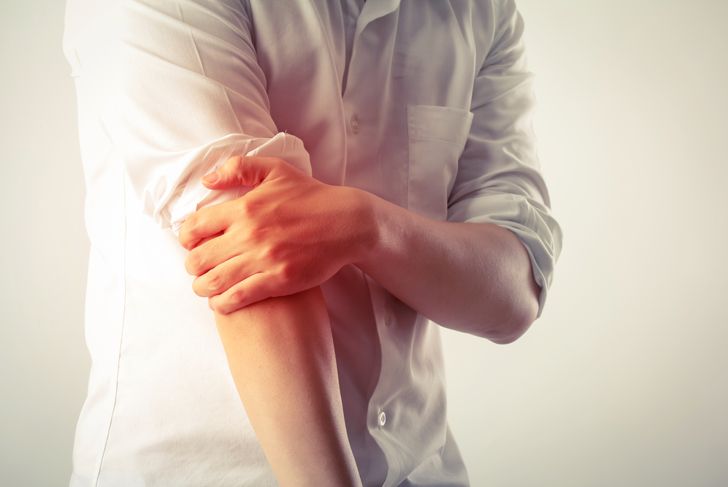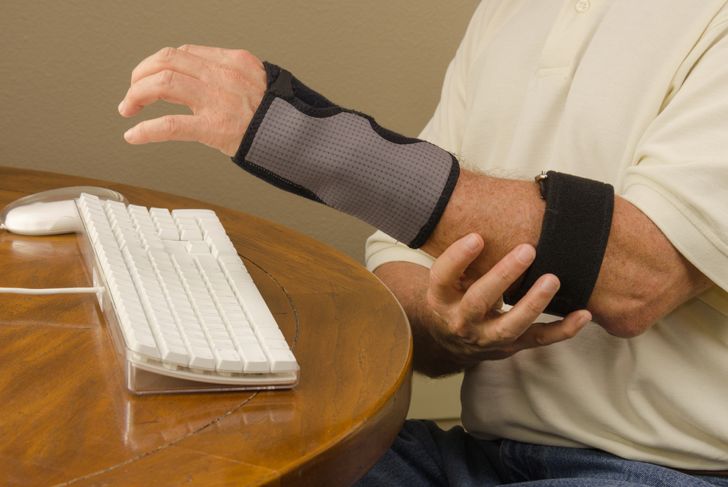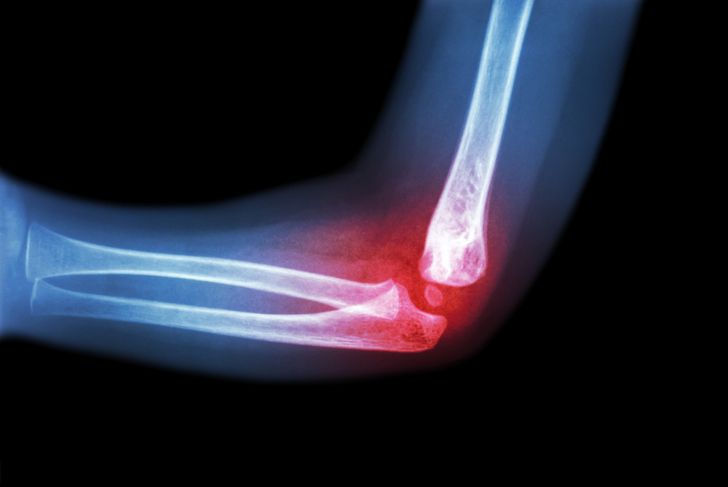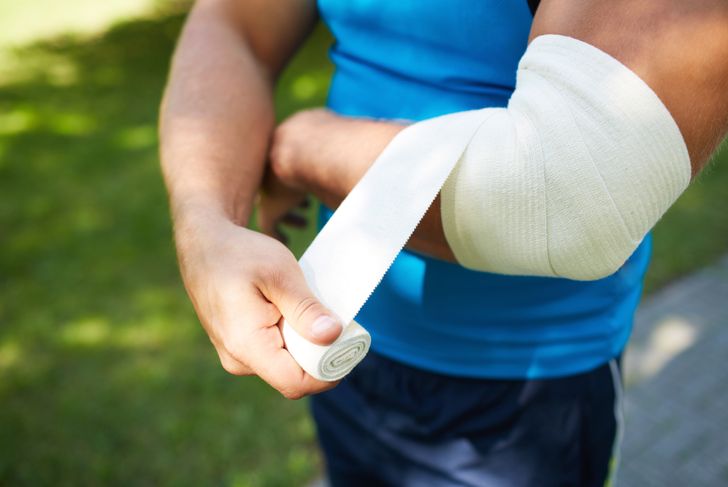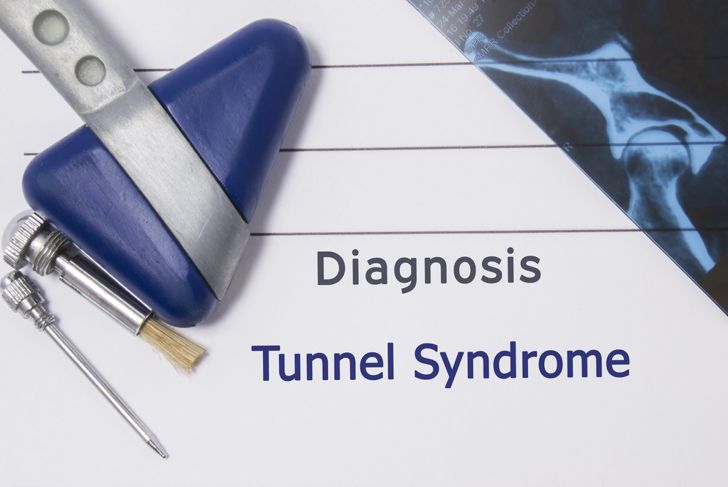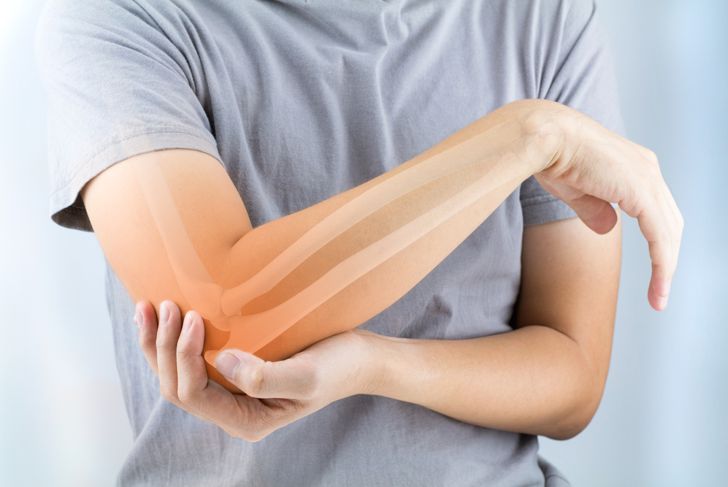Numerous events and factors can lead to pain in the joint between the upper and lower arm. Elbow pain can be caused by bumping the “funny bone,” dislocating the joint, or stressing the tendons or muscles in the area.
Symptoms of Elbow Pain
Symptoms vary based on the cause of elbow pain. However, the main indicators of a problem with the elbow include discomfort or soreness and a decreased range of motion. Elbow injury can cause a weak grip, tingling from the elbow down to the fingertips, and even nausea. The pain may feel like it is coming from the bone, joint, muscle, or tendons, and may be felt when the elbow is bent, straightened, in motion, or any combination of these.
Tendinitis
Tendons connect muscles to bones. Tendinitis develops when tendons become inflamed due to an injury, disease, repetitive motion, or general aging, and the condition causes pain and tenderness. Staying fit, building muscle, and warming up before exercising can reduce the chance of developing tendinitis. Individuals should also be mindful to avoid repetitive motions, use proper posture when working, and try not to stay in the same position for too long.
Arthritis
Arthritis is an inflammatory that causes swollen and sore joints. It is not a single disease, as there are different types. The most common is osteoarthritis. The condition can affect one or more joints at a time. Symptoms include joint pain, stiffness, and swelling. People with arthritis may notice their symptoms worsening over time, or they may develop suddenly. Slow and gradual development of the symptoms is most typical. Arthritis is most common in females over the age of 65 who are obese, though the condition can afflict people of any age and weight.
Bursitis
Bursae are fluid-filled sacs located where musclesand tendons glide over bones. They work like grease for the joints, cushioning and lubricating these connections. Bursitis occurs when bursae become inflamed. Treatments include rest, antibiotics, corticosteroids, physical therapy, and sometimes surgery. After treatment, the symptoms should fade, but bursitis can also become chronic.
Tennis Elbow
Tennis elbow occurs in people who engage in repetitive activity that involves rotating the wrist, such as swinging a tennis racquet, swimming, or golfing. Damage to the extensor carpi radialis brevis tendon in the forearm is the primary cause. Symptoms of tennis elbow include mild elbow pain that gradually worsens, pain from the outside of the elbow down the forearm, and increased pain when shaking or squeezing an object. Some people develop an inability to grip objects or pain when lifting or twisting the hand and wrist. A physical exam, x-ray, or MRI can diagnose tennis elbow. Treatments include rest, ice, physical therapy, steroid injections, shock wave therapy, and surgery in severe cases.
Sprains and Strains
A sprain is a stretching or tearing injury to a ligament, the band of tissue that connects bone to bone in a joint. A strain is an injury to a tendon, the tissue that connects a muscle to a bone. These injuries can happen when an individual twists or falls on an elbow or sustains a direct blow to the elbow. Symptoms include limited mobility, pain, swelling, cramping, and muscle spasms. The most common treatments for sprains and strains include rest, icing the elbow, applying compression, elevating the arm, over-the-counter medication to reduce pain and inflammation, and a soft cast.
Cubital Tunnel Syndrome
Cubital tunnel syndrome occurs when the ulnar nerve is compressed or overstretched. The ulnar nerve is one of three main nerves in the arm, running from the neck to the tips of the last two fingers. The most common and obvious symptoms of the condition are sharp elbow pain, weakness of the hand, numbness, and tingling that moves from the elbow to the last two fingers. To prevent cubital tunnel syndrome, individuals can avoid activities that require maintaining a bent elbow for an extended period. Avoid sitting at a desk with the chair too low or leaning on the elbow or the side of the arm. Sleeping with the arms mostly straight is also ideal.
Dislocation
Dislocation occurs when a bone involved in a joint slips out of its connection with another bone. Almost any joint can be dislocated, but the most common are the shoulder, knee, elbow, hip, and ankle. Dislocation is painful and the event is often accompanied by a popping sound. Untreated, dislocations can cause serious long-term damage to affected ligaments, nerves, and blood vessels.
Visit a Doctor
Anyone who experiences pain, swelling, or bruising of the elbow should make a medical appointment. Also, difficulty moving the elbow or any noticeable deformity should prompt a doctor’s investigation. If mild or moderate pain is the only symptom, rest, head and ice, and compression are at-home remedies that could alleviate the issue. If the pain, however severe, does not abate in a few days, consider seeing a doctor.
Fun Fact About Elbows
Elbows may be small, but they are mighty! The elbow, which allows us to rotate our hands and do bicep curls, contains only three bones. However, 23 muscles enable bending of the arm. Trampolines are the most common cause of elbow fractures. The elbow houses important blood vessels and nerves, making it a difficult surgical location, so it is best to avoid injury wherever possible.

 Home
Home Health
Health Diet & Nutrition
Diet & Nutrition Living Well
Living Well More
More